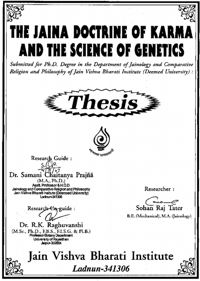How DNA Works
Immortal work of moral manDNA influences many of our characteristics. Now it is explained how DNA does this? DNA looks like a large double stranded helix. Two stands are said to be complement—the "sequence" on one strand determine sequence on the other. One reason for this is for protection against mutation. If something happens to one of the strands of DNA, it is possible to read the opposite strand to make a new copy of the damaged strand. To simplify things, think of DNA as long piece of ticker tape. Written on this ticker tape are all sorts of instructions or genes. Genes are discrete units of information that tell cells what to do. For example, there might be a gene for brown hair or gene for green eyes. Each one of our cells contain the exact same DNA sequences, or genes (with some exceptions). There are controls in place to make sure that the correct genes get exposed in the correct tissues—to ensure that you grow fingernails only on your fingers and hair only on specific parts on your skin etc.
There are systems in our cells that read the DNA sequence and translate it into protein. Proteins are made by linking amino acids together. When you eat proteins, it gets broken down into amino acids in your stomach - that is why it is important to eat enough proteins. DNA contains the instructions, protein carry out the instruction.
So if DNA makes proteins and protein perform functions, then the ultimate goal of genetic engineering is to alter proteins. Since proteins don't last very long. They are poor targets for genetic engineering. DNA is copied from one generation to the next, from parents to children, changes in DNA can be carried over generations, making it a good target for lasting changes. There are two basic types of modifications:
It is a tale of king and his servants.
"When I came to the laboratory of my father, I usually see some plates lying on the table containing colonies of bacteria. These colonies remind me of a city with many inhabitants. In each bacterium there is a king. He is very long by skinny. The king has many servants. These men are thick almost like ball. My father call the king 'DNA' and the servants 'enzymes'. The king is like a book, in which everything is noted on the work to be done by servants. For us human beings these instructions of the king are a mystery. My father discovered a servant who serve as a pair of scissors. If a foreign king invades the bacterium, this servant can cut him into small fragments but he does not do any harm to this own king.
Clever people use the servant with scissors to find out the secrets of kings. To do, they collect many servants with scissors and put them on to the king so that the king is cut into many pieces. With the resulting little pieces it is much easier to investigate the secrets. For this reason my father receive the noble prize for the discovery of servant with the scissors."
Such is the tale of the king and his servants as told by silvia Arber, the ten year old when her father has honoured along with Hamilton smith and Daniel Nathans for the discovery of "restriction enzymes in 1970, the scissors of genetic engineering without which any recombining would be impossible".[67]
 Prof. Dr. Sohan Raj Tater
Prof. Dr. Sohan Raj Tater
 Doctoral Thesis, JVBU
Doctoral Thesis, JVBU